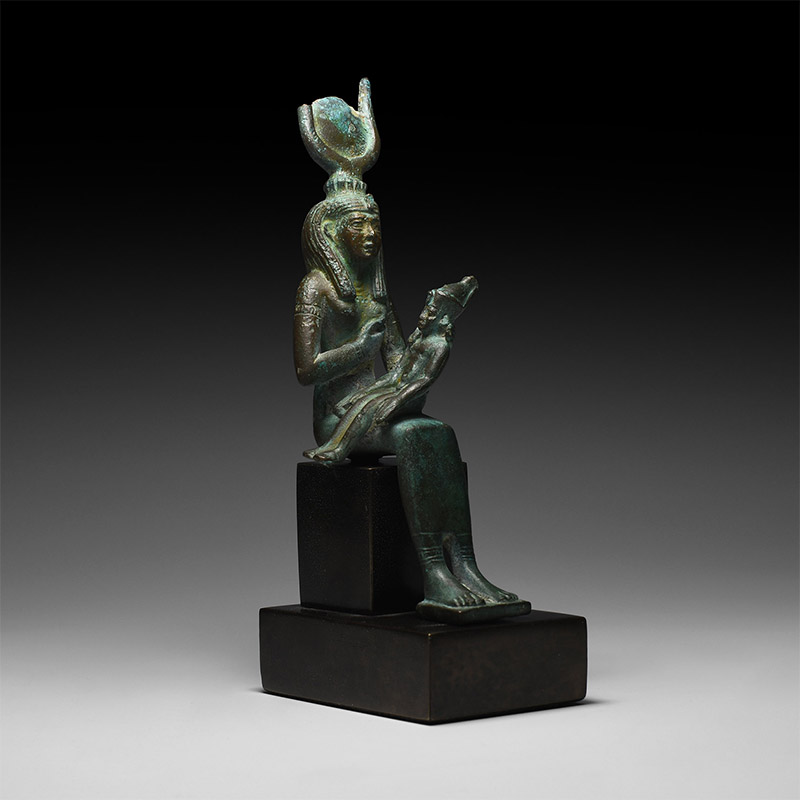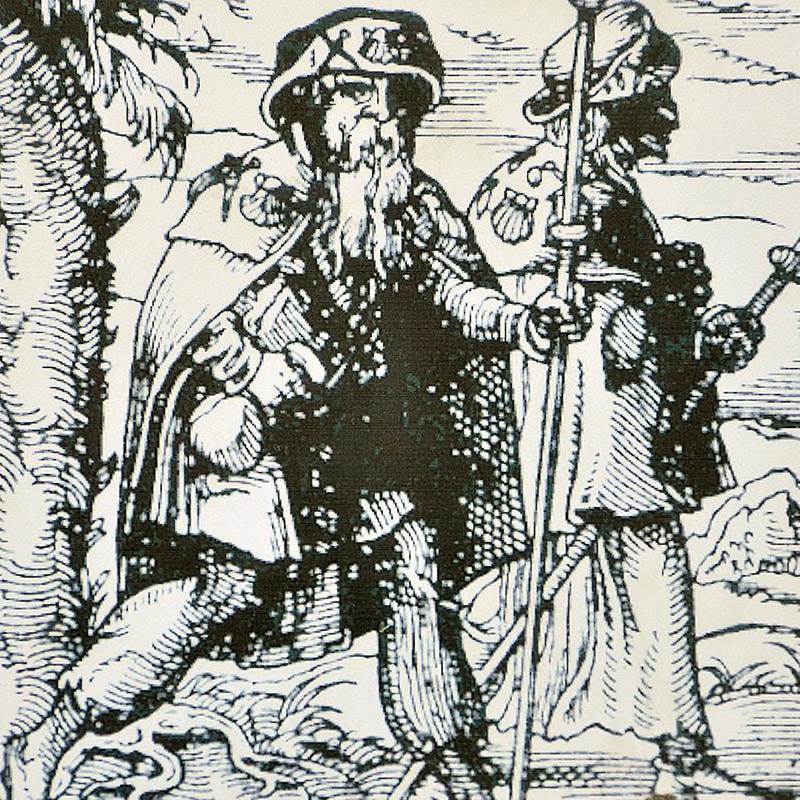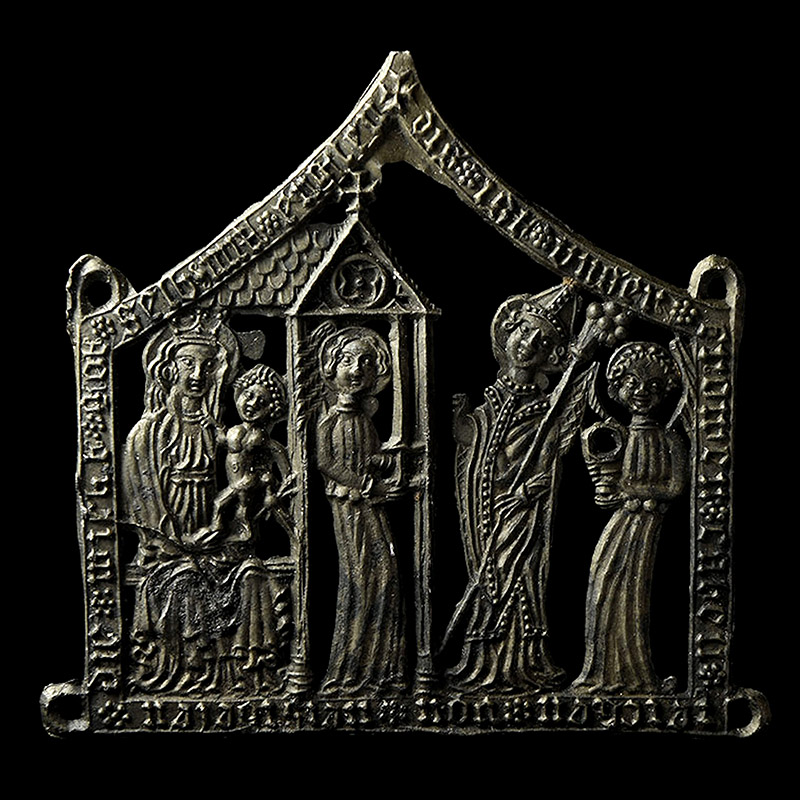Home > Stories by TimeLine Auctions
Stories by TimeLine Auctions
Isis And The Black Madonna Connection
 In early 2020, TimeLine’s meticulous vetting panel examined an unusual potential lot: a rare 14th century pewter pilgrim badge. It passed vetting with flying colours and went forward to our first auction of that year, where it sold for £5,750. As you can see from the accompanying photograph, the badge depicts a busy medieval scene. On the left sits Mary nursing the infant Jesus beneath the shelter of a roofed building. The structure represents a retreat built by a Benedictine monk named Meinrad in the early ninth century when he first arrived as a wandering cleric in that part of the German Holy Roman Empire. (Centuries later it became the country we now call Switzerland.) Meinrad settled in the forest not far from a small village, later renamed Einsiedeln (meaning hermitage in German), about twenty-five miles south-east of Zurich. His few possessions included a small wooden statue of a nursing Madonna. Both Mary and her child had dark skin. Some versions of Meinrad’s biography suggest that he had spent time in the Near East during his younger days; perhaps in Egypt or Palestine, where he may have acquired his Black Madonna. It lies not beyond the realms of possibility that in his travels Meinrad had found an abandoned wooden carving of Isis feeding Horus. Worship of the goddess had withered away in Egypt only a few centuries before the monk’s arrival; and a number of carved ebony statues of Isis had made their way across the Mediterranean to Europe during that period. Some Christian Madonna figures seen in early churches were later replaced after close examination revealed they were in fact statues of Isis and Horus that had been innocently confused with Mary and Jesus. Those were not attempts at fakery; simply mistakes made as a result of similarities in appearance and dark hues.
In early 2020, TimeLine’s meticulous vetting panel examined an unusual potential lot: a rare 14th century pewter pilgrim badge. It passed vetting with flying colours and went forward to our first auction of that year, where it sold for £5,750. As you can see from the accompanying photograph, the badge depicts a busy medieval scene. On the left sits Mary nursing the infant Jesus beneath the shelter of a roofed building. The structure represents a retreat built by a Benedictine monk named Meinrad in the early ninth century when he first arrived as a wandering cleric in that part of the German Holy Roman Empire. (Centuries later it became the country we now call Switzerland.) Meinrad settled in the forest not far from a small village, later renamed Einsiedeln (meaning hermitage in German), about twenty-five miles south-east of Zurich. His few possessions included a small wooden statue of a nursing Madonna. Both Mary and her child had dark skin. Some versions of Meinrad’s biography suggest that he had spent time in the Near East during his younger days; perhaps in Egypt or Palestine, where he may have acquired his Black Madonna. It lies not beyond the realms of possibility that in his travels Meinrad had found an abandoned wooden carving of Isis feeding Horus. Worship of the goddess had withered away in Egypt only a few centuries before the monk’s arrival; and a number of carved ebony statues of Isis had made their way across the Mediterranean to Europe during that period. Some Christian Madonna figures seen in early churches were later replaced after close examination revealed they were in fact statues of Isis and Horus that had been innocently confused with Mary and Jesus. Those were not attempts at fakery; simply mistakes made as a result of similarities in appearance and dark hues.
 Early European Christians revered such relics; not for any association of their black colour with sub-Saharan African people; but for their powerful connection with Egypt of Christian biblical renown. Old Testament accounts of Moses, Pharoah, the Israelites, the Parting of the Red Sea, the Plague of Frogs, all became vivid realities when ninth century congregations listened in awe as a monk read from Exodus. If, when looking up at the altar, the listeners saw a Madonna and Child apparently blackened with age, the relic’s antiquity strengthened their belief in its biblical provenance. Blackness indicated not only visual proof of age; it additionally conferred Holy Land authenticity on an artefact with a Christian biblical provenance.
Early European Christians revered such relics; not for any association of their black colour with sub-Saharan African people; but for their powerful connection with Egypt of Christian biblical renown. Old Testament accounts of Moses, Pharoah, the Israelites, the Parting of the Red Sea, the Plague of Frogs, all became vivid realities when ninth century congregations listened in awe as a monk read from Exodus. If, when looking up at the altar, the listeners saw a Madonna and Child apparently blackened with age, the relic’s antiquity strengthened their belief in its biblical provenance. Blackness indicated not only visual proof of age; it additionally conferred Holy Land authenticity on an artefact with a Christian biblical provenance.
Despite the holy man’s protestation that he preferred solitude, villagers and others from the surrounding countryside flocked to his hermitage, especially when cures succeeded and prayers to the Black Madonna received favourable responses. For the next thirty years the monk submitted to the work his God clearly demanded: he and his statue fulfilled the spiritual needs of the people around him, receiving in return, devotion and daily gifts of food and drink. When two robbers arrived one day and demanded money they believed the hermit kept hidden within the hermitage, the monk invited them in, offered food, drink and his blessing; but received in return only blows about the head that killed him. The robbers fled, pursued by two crows that had taken up residence in the hermitage roof. Alarm calls from the birds alerted villagers who soon apprehended the murderers…
During the next several decades the site, without Meinrad’s presence, shrank to near oblivion. The villagers probably hid the Black Madonna, while the forest gradually commenced its reclamation of the cleared ground .. until the year 934. It marked the arrival of a party of Benedictine monks who knew Meinrad’s story, and who had determined not only to recover the hermitage, but also to make a shrine of it, and to build a monastery on the very spot. Construction commenced that same year; but completion of the monastery would take centuries; eventually giving Switzerland the magnificent baroque edifice we admire at Einsiedeln today. Within its high walls, the hermitage and shrine of Saint Meinrad (as he later became) began to attract renewed attention. Einsiedeln’s location on the renowned St James’ Way from Vienna to Santiago de Compostela in Spain brought throngs of pilgrims who paused briefly at the monastery, paid their respects to the Black Madonna, and, by the 14 th century, bought leaden badges as mementos of their visit.
 Look again at the badge. The mitred figure to the right is Konrad, Bishop of Constanta, who arrived in 934 to consecrate the rebuilt monastery, with its walls by then enclosing the hermitage, Meinrad’s shrine and the Black Madonna. Also shown is an angel who halted the bishop before he could commence his consecration speech. The angel’s words are inscribed around the borders of the badge: “Stand aside, Brother. God has already ordained this chapel.” They refer to a ceremony in which angels appeared and dedicated the chapel to Mary before the bishop could begin his consecration service. The story of that angelic consecration and the many miracles that followed in subsequent centuries, earned Einsiedeln international fame.
Look again at the badge. The mitred figure to the right is Konrad, Bishop of Constanta, who arrived in 934 to consecrate the rebuilt monastery, with its walls by then enclosing the hermitage, Meinrad’s shrine and the Black Madonna. Also shown is an angel who halted the bishop before he could commence his consecration speech. The angel’s words are inscribed around the borders of the badge: “Stand aside, Brother. God has already ordained this chapel.” They refer to a ceremony in which angels appeared and dedicated the chapel to Mary before the bishop could begin his consecration service. The story of that angelic consecration and the many miracles that followed in subsequent centuries, earned Einsiedeln international fame.
At the time of the French Revolution, Einsiedeln suffered the indignity of serving as a barracks for French troops. They damaged the Black Madonna before monks could hide it. A year spent in damp conditions further affected its surface; but in 1799, with the French departed, an artist hired to repair the relic set to work with enthusiasm. Changing social attitudes seem to have influenced his choice of colours: the restored Madonna and Child now had white skin. Infuriated monks and parishioners voiced their complaints so loudly that the artist made alterations, adding bright shades to the eyes, cheeks and lips of both figures. Uproar ensued once again when the monks and congregation viewed the results, accused the artists of fakery, and stood over him as he followed their precise instructions and gave the faces of Madonna and Child a deep black finish, which would have delighted Isis and Horus.
Dr Raffaele D’Amato, TimeLine Auctions, 12th January 2024




